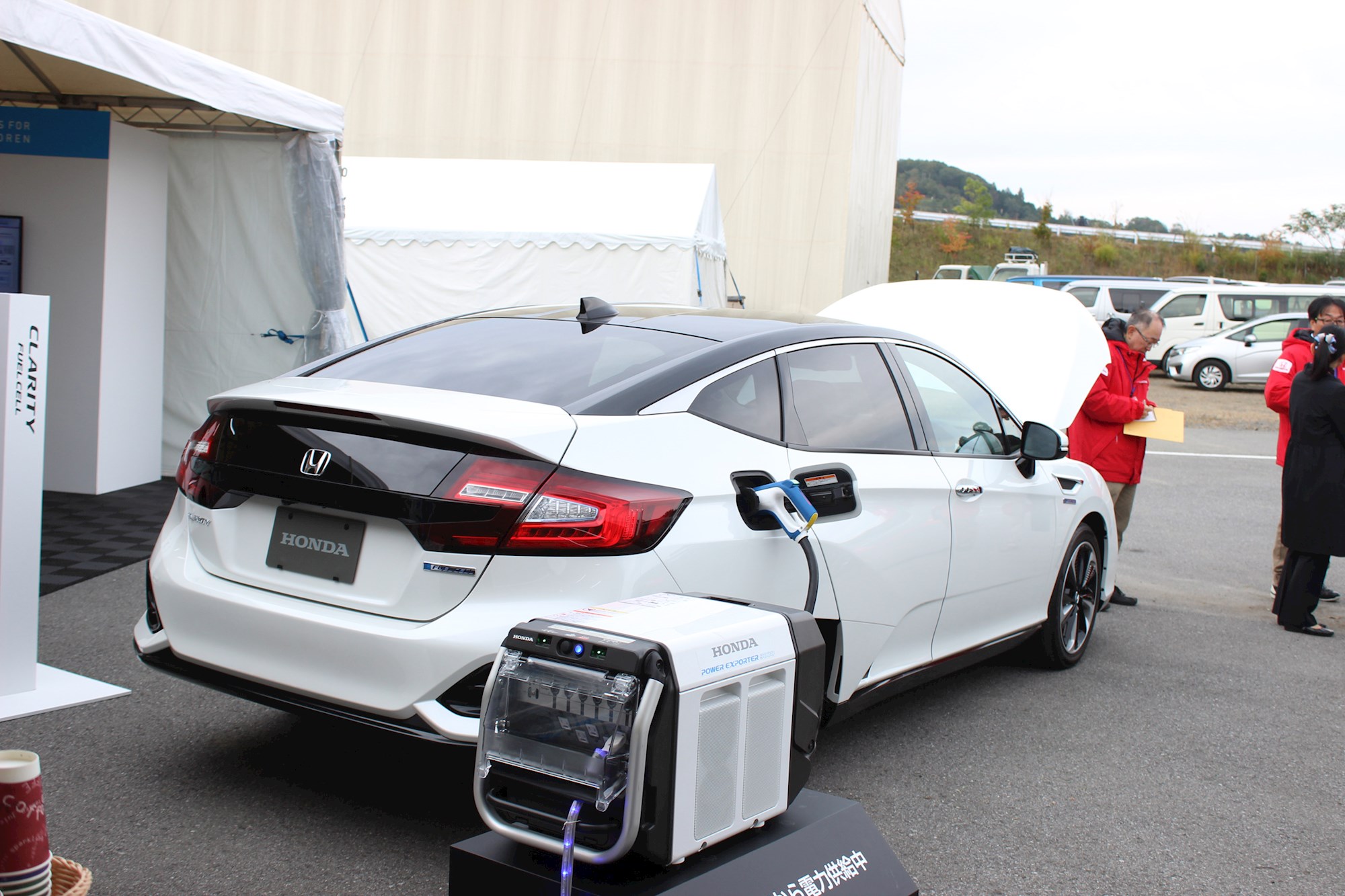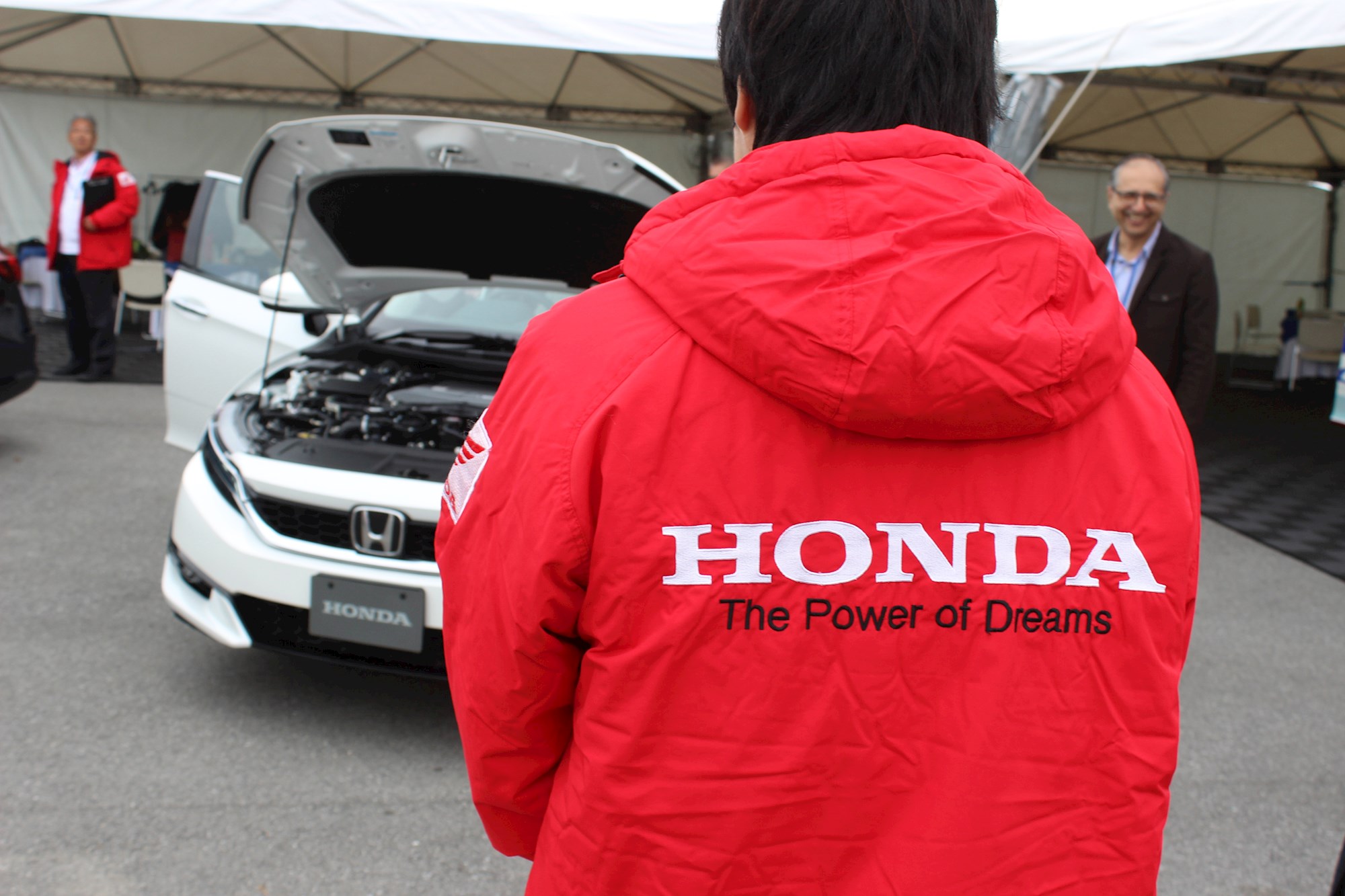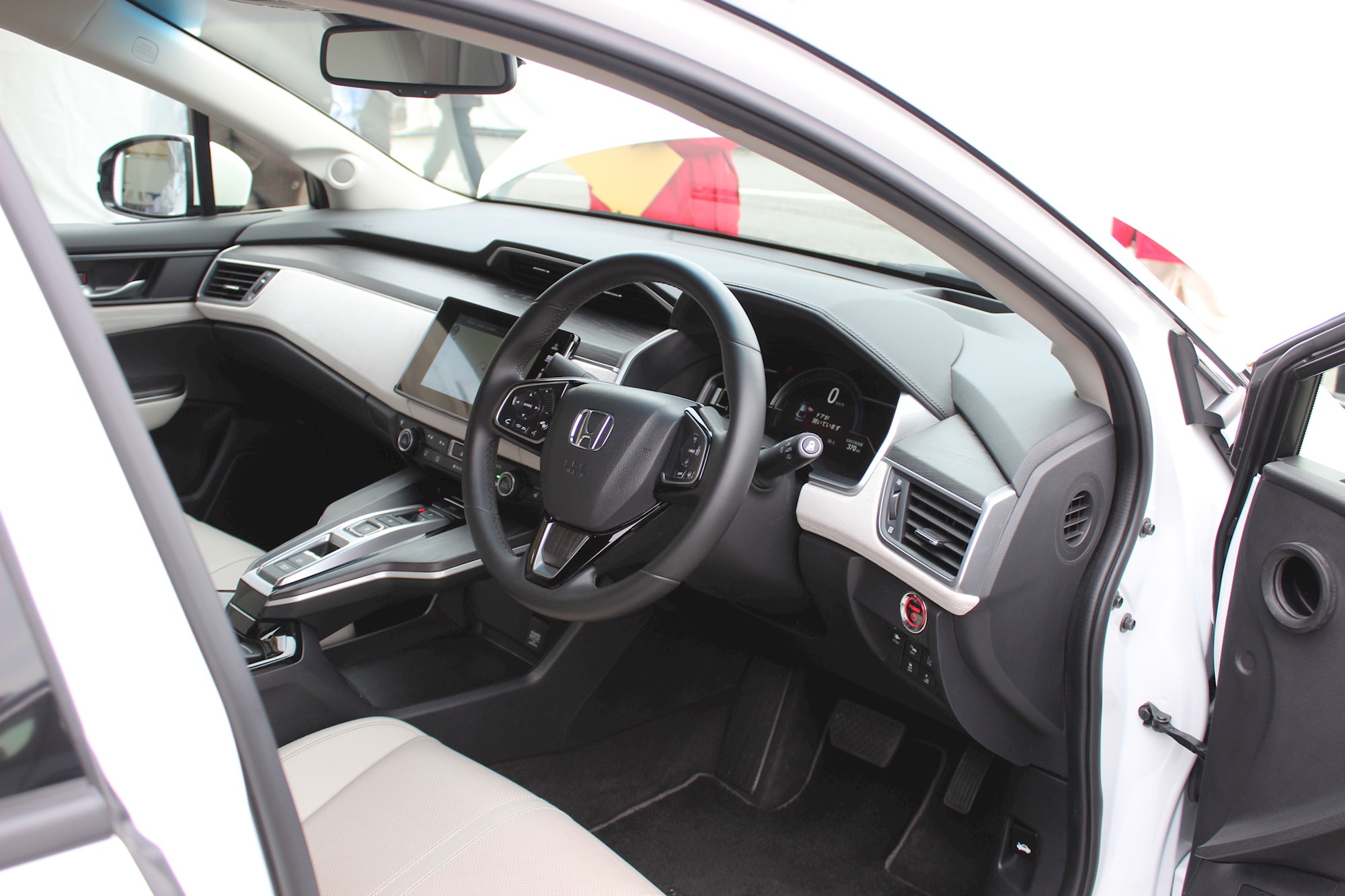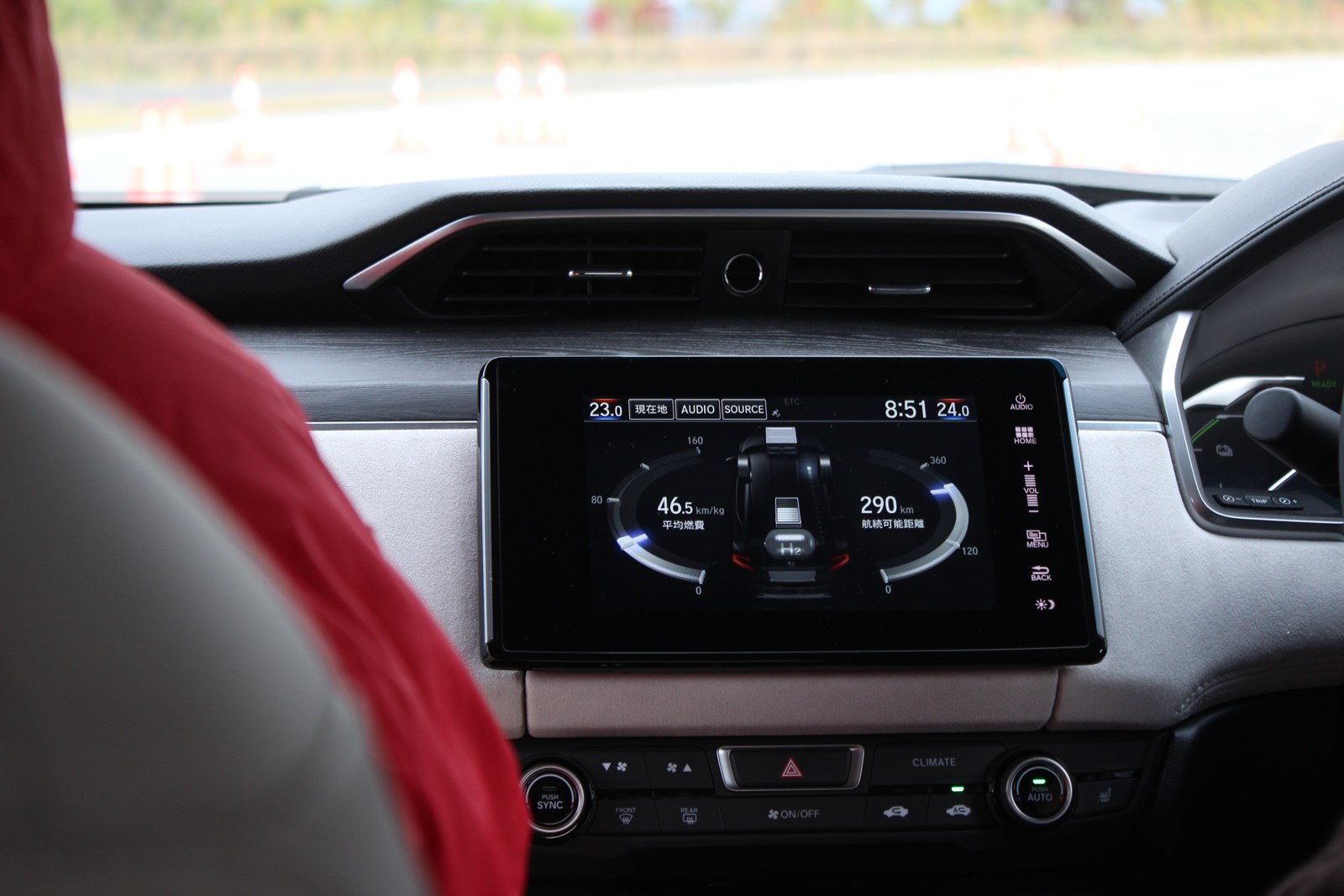As Driven gets to sample new iterations of the future-tech Clarity hydrogen fuel cell — and now plug-in hybrid — vehicle in Japan, Honda New Zealand reveals it is open to increasing its plug-in model options for Kiwi buyers. But only when the right models become available.
Honda New Zealand is interested in adopting plug-in electric vehicle (PHEV) technology but the timing, says general manager of marketing Nadine Bell, isn’t right with regard to current model life cycles.
“We are open to absolutely anything coming through our supply chain with hybrid technology on board,” she told Driven at Honda’s Twin Ring Motegi race track and test facility, north of Tokyo, last week.
“We have a number of midlife updates coming through within the next 12 months, most notably for Jazz, Odyssey and HR-V.
“However, although there is hybrid drivetrain availability for these models in the Japanese domestic market, we aren’t likely to adopt these models as part of the mix for New Zealand at this stage,” says Bell.

At a global level, Honda Motor Co President and CEO Takahiro Hachigo said, at last week’s Tokyo Motor Show, that the company was aiming to electrify two-thirds of its global automotive output by 2030.
Speaking with Driven at a post-motor show press conference, Hachigo-san suggested that of the 65 per cent of vehicles that would fit into this category, 15 per cent would be zero-emission vehicles (battery-electric and fuel-cell models), and 50 per cent would be plug-in hybrids.
When considering that many models familiar to Kiwi drivers are already available as hybrid electric vehicles (HEVs) in the Japanese domestic market, this goal seems doable. However, for Honda New Zealand, which sources the bulk of its local line-up through Thailand, the path to increased electrification options in Kiwi showrooms isn’t as straightforward.
“The Insight was a success for us in New Zealand as a hybrid car and we know that the consumer appetite for PHEV products has only increased since then,” continues Bell. “But we have to find the right model for the right time. I’m not convinced, for example, that a plug-in Jazz would be the best first option for introducing mainstream PHEV technology to Honda customers. An SUV like the CR-V, however, would certainly fit where the market is currently focused.”

Once added to the range in the next 12-18 months, the CR-V PHEV will initially be available only in Europe, so despite New Zealand’s geographical nearness to the source, it could be 2019 or 2020 before that model is seen on local roads.
There are also other considerations in leaping from HEV to PHEV powertrains for local supply, says Bell, including increased costs and the need for improved recharge infrastructure.
Bell also says that there is an Accord PHEV available in overseas markets, which would make for a good proposition for corporates wanting to demonstrate more environmental responsibility. Again however, there is no hint of this becoming available to the local market anytime soon.
Also, the Accord is a big sedan, so all bets are off as to its potential uptake in these SUV-focused times. It has to be said, however, that, compared to the Clarity, which Driven was able to sample at the Twin Ring Motegi test track, an Accord PHEV could be a more conventional large car option.
This is because despite an increase in available powertrains from just the original hydrogen fuel cell version, the Clarity remains anything but conventional.

Let’s get past the looks first, which remind me of something distinctly GM-ish — a Holden VR Caprice, or an early 2000s Cadillac Brougham, perhaps. You can tell in an instant this thing is destined for the US market. Those extended overhangs and that rear wheel spat (a visual nod to the Honda Insight of old) give it a touch of jet-age nostalgia and overwhelm Honda’s sharply styled front grille design.
Things are better inside. There are acres of occupant space, and a beautifully simple centre stack, bookended with switchgear and touchscreens that’ll be familiar to anyone who has sat in a current-generation Civic or CR-V. Rather than a gear lever, individual buttons marked with P, R, N and D add to the Jetsons vibe, as does the high-pitched whirr of the electric motor as you start.
Available for some time as a lease-able hydrogen fuel cell vehicle (FCV) in Japan and California — where investments have been made in hydrogen refuelling infrastructure — the Clarity will now also be available as a PHEV and a fully electric battery electric vehicle (BEV), which will broaden its appeal.
In PHEV form, the Clarity will build on a stated 100km battery-only range with a 1.5-litre inline four-cylinder petrol engine paired with a two-motor i-MMD (Intelligent Multi-Mode Drive) hybrid system. Augmenting the electric motor, the petrol engine offers up 135kW peak power and 315Nm of torque.

In both the PHEV and BEV versions, Honda’s 17kWh lithium-ion battery pack is mounted low to aid with passenger and load space. At first glance the Clarity looks like a liftback a-la second-generation Honda Insight, but it’s actually a sedan. It does boast an enormous boot however and, regardless of which of the three powertrains it deploys, the same platform is utilised for all. So, you can still use your unconventional FCV/PHEV/BEV to run decidedly conventional errands.
Oh, and here’s another clever aspect to the hydrogen-powered Clarity FCV; with the help of a Honda Power Exporter unit (an NZ$12,000-ish optional extra), you can reverse the power from the car to power other things. An NZ$60 refuel of hydrogen (which will take about three minutes to complete) can power everything in a standard-sized family home for seven days. That’s right; the Clarity is the fastest power station on four wheels. And before you scoff at such gimmickry, Honda has already sold loads of Power Exporters in Japan, mainly to disaster response management entities. It’s reversible technology that could make a difference when the main electrical supply has been corrupted.
As to the Clarity — in any form — making a difference to Honda New Zealand’s HEV and PHEV sales sheet, that seems unlikely. But the local distributor knows it needs other options quickly.
“Our goal of electrifying two-thirds of Honda’s global fleet has to happen inside the next 13 years,” concludes Bell. “That’s why we are open to everything. We want to act quickly, and we need to be flexible. And with the right models, we will definitely be a part of that push in New Zealand.”














